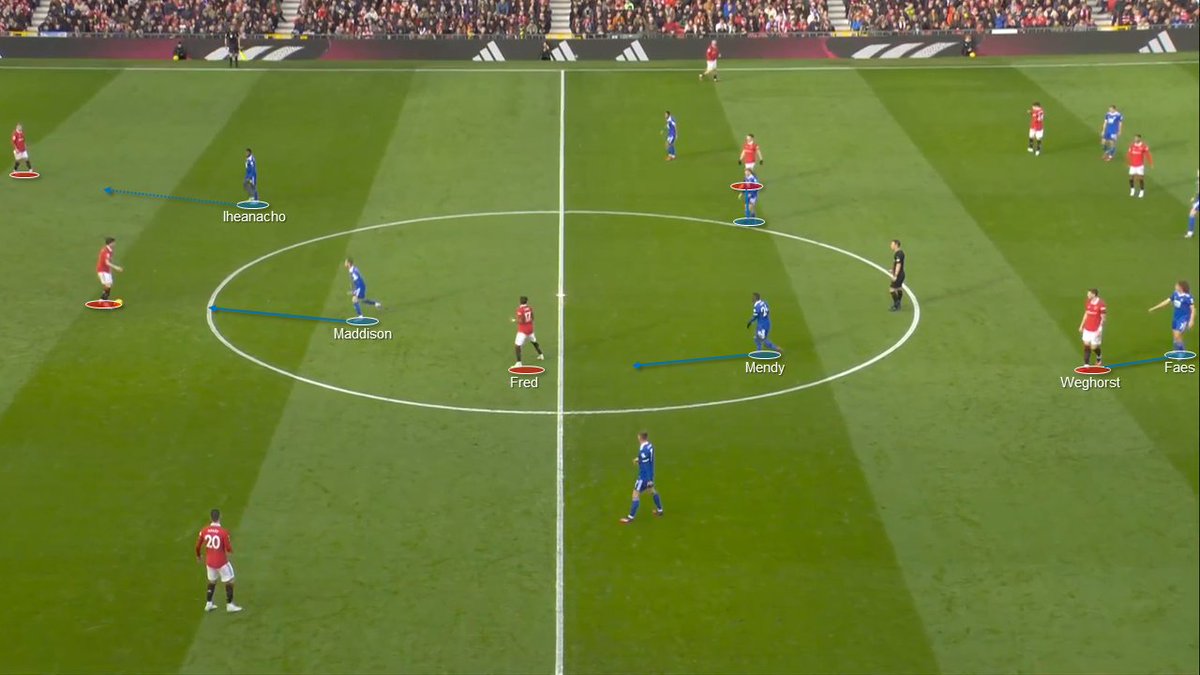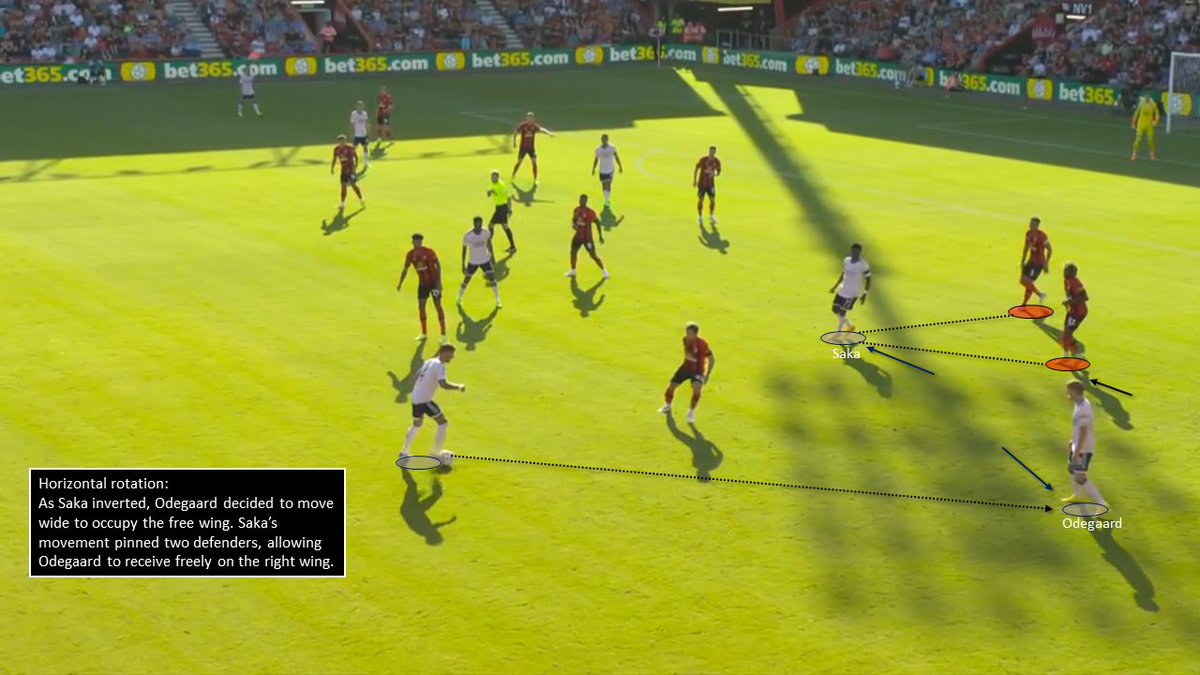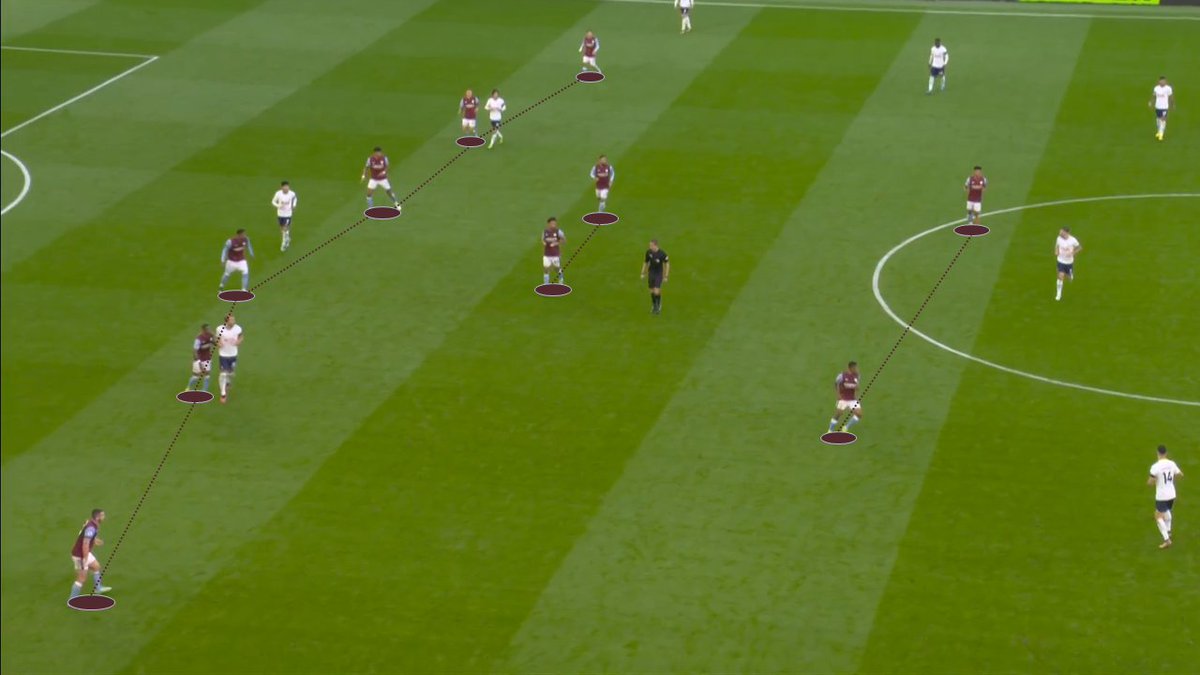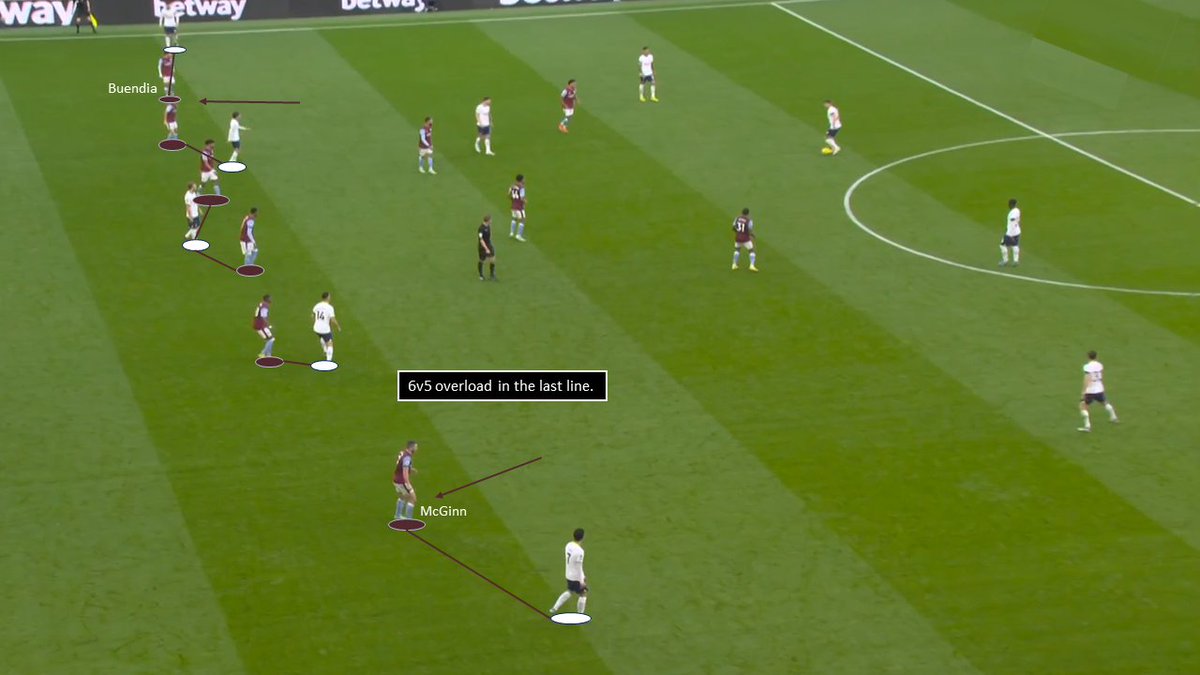Aspect Analysis: Argentina’s dominance in the first half vs. France #ARGFRA [THREAD]
The 1st half of the #FIFAWorldCup final excellently showcased Argentina’s qualities both in and out of possession by completely outplaying France.



The 1st half of the #FIFAWorldCup final excellently showcased Argentina’s qualities both in and out of possession by completely outplaying France.




To begin with, France used a lopsided 4-2-3-1 press with Mbappe starting higher, forcing Hernandez to press Molina. Furthermore, Griezmann had a hybrid role, either marking Fernandez, pressing Otamendi or dropping deeper. 





Argentina mostly tried to progress down the right side through clever positionings in between the lines from Messi or creating an overload with Molina advancing. The Argentines regularly exploited France’s passivity and disorganization. 





Nevertheless, Argentina’s most dangerous attacks came from their left side. The world champions usually started their attacks on the right, provoking France and then quickly switched to the other wing, where they found Di Maria in 1v1 situations or a 2v1 overload. 







Argentina’s attacking patterns as well as France’s various organization problems can be perfectly seen just before they received the penalty: 







Another key component of Argentina’s dominance was their intense pressing setup, restricting France to 0 xG in the first half. The Argentines used an asymmetric 4-3-3/4-4-2. Vital was that they doubled up the wingers and were aggressive in the last line. 







Argentina’s second goal came from an incredible counterattack. Even though they didn’t win the ball back from an organized pressing structure, it still showed Argentina’s intensity and the willingness of their players: 







Conclusion:
The first half of the final was undoubtedly Argentina’s best one of the tournament and showed why they ultimately deserved to win the trophy.
The first half of the final was undoubtedly Argentina’s best one of the tournament and showed why they ultimately deserved to win the trophy.
• • •
Missing some Tweet in this thread? You can try to
force a refresh























































